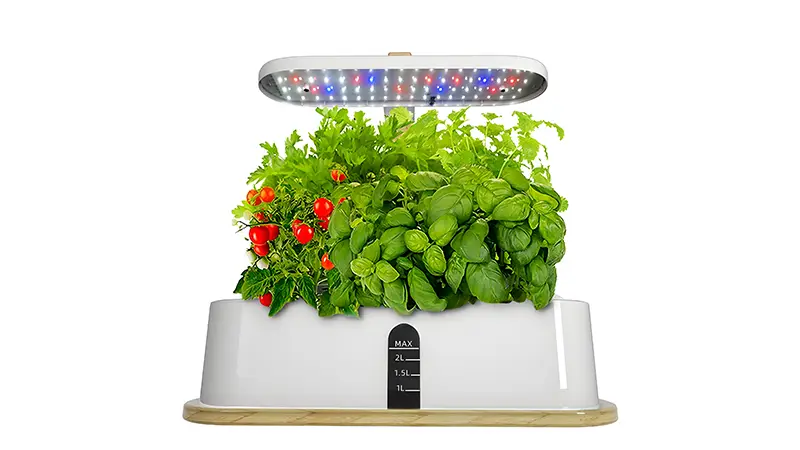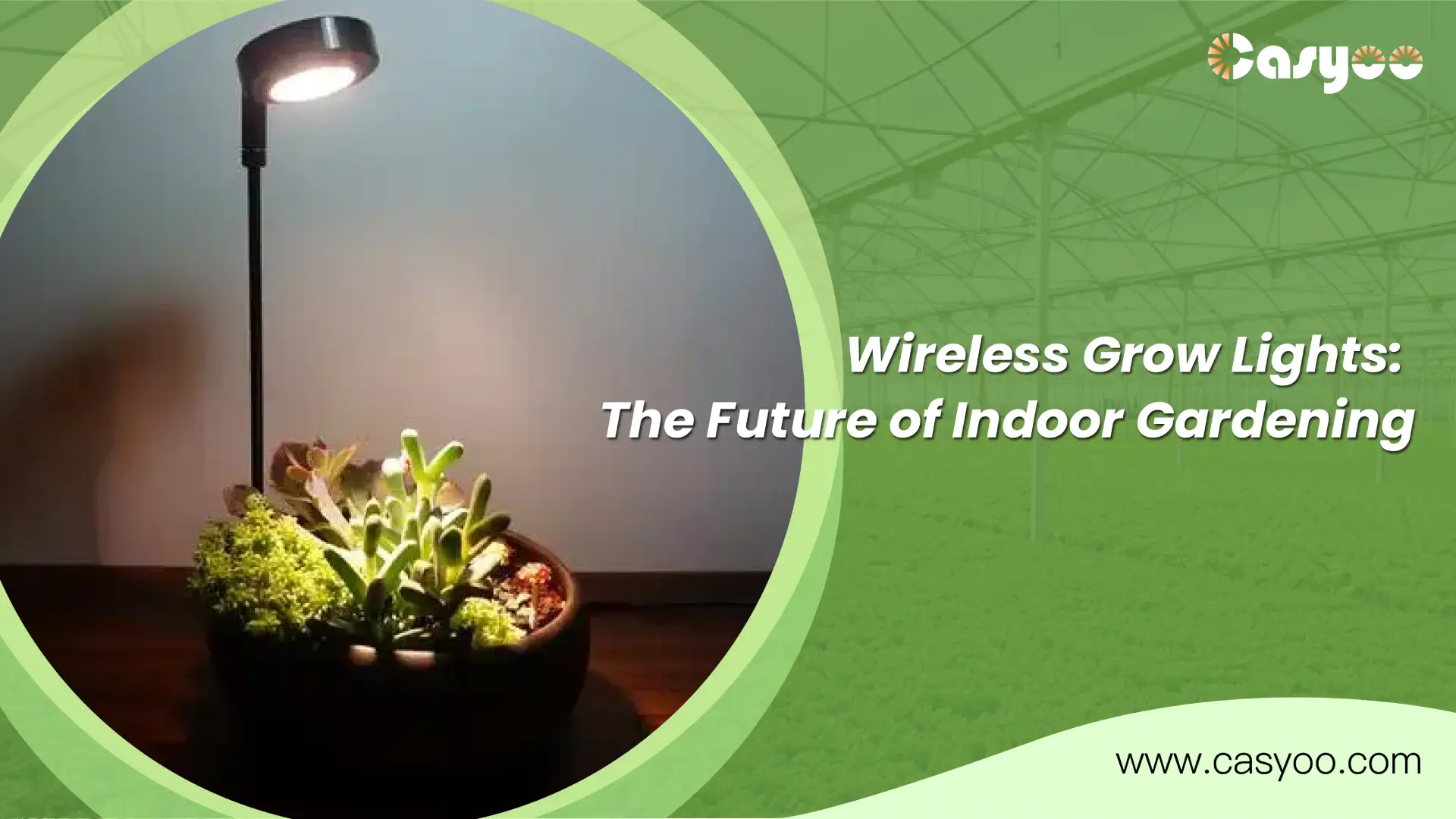The inconvenience of power cords and permanent lighting locations has always been a bane to indoor gardening. Wireless grow lights with a combination of LED technology, battery power, and smart controls appear to be an answer, but do they really work? Is wireless grow lights a game changer for indoor gardening? Let us have a look.
Can I Use Wireless Grow Lights to Replace General Grow Lights?
Wireless grow lights usually refer to battery-powered or wireless charging technology-powered grow lights. While wireless grow lights are feasible, wired grow lights are still the standard in the marketplace. The following is a comparison of wireless grow lights and regular grow lights:
| Wireless Grow Lights | General Grow Lights | |
| Advantages | Steady power and high light intensity, producing constant, high-intensity light. | Flexibility: Not restricted by a power outlet for placement, one can move around freely. |
| Different choices and lower costs: A broad range of products is available in the market, from commercial-sized fixtures to fill lights for the home, providing great value. | No tangles of wires, a clean finish in the grow space. | |
| Good reliability: There are no concerns about battery life and wireless charging capability, and connection is stable. | / | |
| Disadvantages | Restricted placement: Requires proximity to a power outlet, limiting placement flexibility. | Weak power and illumination strength: The capacity and efficiency of wireless charging restrict the power of the light, making it difficult to provide the sufficient light intensity required by plants. |
| Inconvenient wiring: Wires may entangle especially where more lights are required. | Expensive: Costs of wireless charging technology and battery drive up the cost of the product. | |
| / | Battery Life Issues: Batteries have to be frequently recharged or replaced, and forgetting to charge can affect plant growth. |
To sum it up, wired grow lights are preferable in most instances of home and commercial cultivation. This is mainly because plants need constant and consistent light. Wired lights have adequate power and stable light to guarantee healthy growth. Currently, wireless grow lights are not yet in a position to fully meet the stringent light requirements of most plants.
Wireless grow lights are a possibility with varieties which do not need high levels of light, or in home and small commercial grows.
Current Technological Advancements of Wireless Grow Lights
Wireless Control Systems
Bluetooth Control
Most companies have introduced Bluetooth smart grow lights, which enable users to regulate parameters through mobile applications. These systems are convenient to operate and economical. These Bluetooth systems have the capacity to control thousands of lights at a time, personalize light spectrums, and program automatic timers.
Wi-Fi & Cloud Control
Wi-Fi or cloud control offers more powerful management in large-scale cultivation systems. Similar to Bluetooth control, this type of Wi-Fi control enables remote control of plants’ lighting requirements at different growth stages via a webpage or app. There are versions that also support Internet of Things (IoT) integration, where the lighting strategy is automatically based on environmental sensors.
Zigbee Networking
One other low-power, highly stable, and strong control technique is Zigbee wireless networking. The Zigbee protocol is utilized by some research farms to establish a network of grow lights and add temperature, humidity, and CO₂ sensors for completely automated lighting with minimal manual intervention.
Wireless Power Solutions
There are some portable grow lights that utilize rechargeable lithium batteries and are convenient for temporary seedling growth or mobile growing. They can also be used with a power bank in places with unreliable power supply to keep plants safe from power disruption.
How To Choose the Right Wireless Grow Light

Coverage Area
Prior to purchasing, let’s think about your growing space. Most of the wireless grow lights figure their coverage area in square feet. Small units cover 2-four square feet, which is perfect for certain houseplants, whilst large units cover 10 square feet. Note that coverage site varies with hanging peak – the higher the light is mounted the greater the coverage but less of the depth. Suit the light’s coverage to your plant layout, and don’t forget considering purchasing a couple of smaller units rather than one large unit for more versatile connectivity capability.
Battery Life
Look for units with a minimum of eight-12 hours operation per charge – sufficient to supply a complete day’s worth of light. Note charging time (usually 2-four hours) and charging possibilities (USB-C, magnetic dock, sun). Hot-swappable batteries or extended battery packs are available on some advanced models. Consider how the battery life aligns with your growing schedule and if you will need backup power supplies.
Smart Features
Modern wi-fi grow lighting provide varying stages of smart capability:
- Basic: Timer and depth controls
- Mid-range: Smartphone app manage, preset growing modes
- Advanced: Environmental sensors, multi-mild synchronization, distinctive growing schedules




